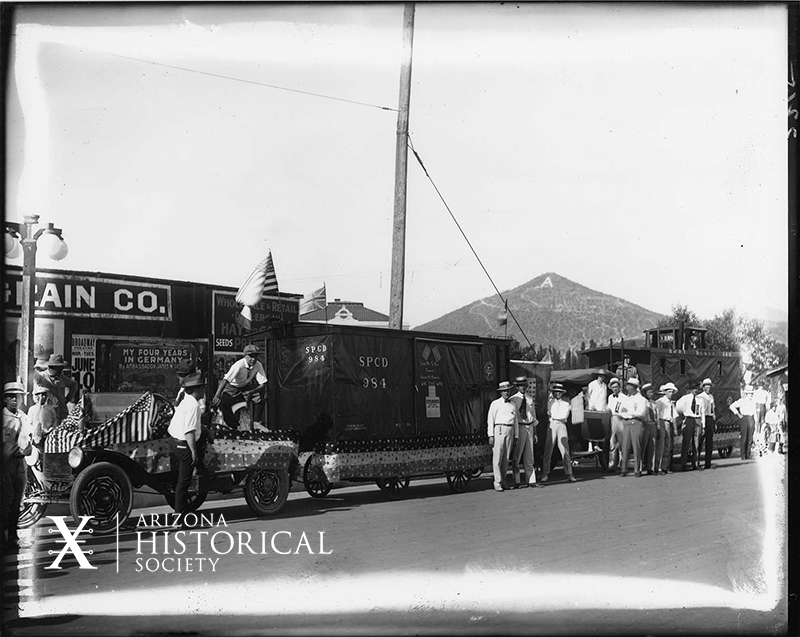It started suddenly. Few people, if any, saw it coming. Even the ones who knew it was coming, some doctors perhaps, couldn’t predict the ferocity of the virus that was spreading across the globe. One day, everything was normal. The next day, suddenly, there were 24 cases of the virus in Tucson. The numbers soon increased. A week later, there were over 100 new cases in the Old Pueblo. Many Tucsonans wondered what to do and when this virus would leave their city. Some Tucsonans believed that their city―including all businesses and schools―should shutdown to stop the spread of the virus. Many others objected to that idea, saying that the economy would stumble as a result. Some saw wearing masks in public as a possible compromise between those who favored a full-blown quarantine and those who wanted to go on as if no virus existed.

Undated photograph most likely from around the end of WWI in 1918. AHS Buehman Photo Collection, #100-0002259 No. B89632
Although that may sound like it’s describing our current situation, it is not. In 1918, Tucsonans―and all Arizonans―faced a global health crisis much like we are facing today. Unlike our pandemic, though, the one in 1918 came immediately on the heels of a devasting global war. World War I had brought death on a scale previously unimaginable. Then came the influenza epidemic, which killed tens of millions more worldwide.
How did Arizonans handle the 1918 influenza epidemic? What worked? What didn’t work? Our answers to those questions are incomplete, but a great place to start for those interested is Bradford Luckingham’s article in the Summer 1984 Journal of Arizona History, which is available on JSTOR. [AHS Members can access all past Journal articles through the Members Only page.]
Luckingham’s article gives us a glimpse into public opinion about mask-wearing in Tucson during the influenza epidemic. Luckingham based his essay on newspaper accounts of the mask debate in 1918. Thus, we know what the Tucson newspaper editors and writers reported, but we know less about what ordinary Tucsonans thought about wearing masks. Luckingham’s essay is a great jumping off point for understanding the 1918 epidemic in Arizona, and hopefully more historians will pick up where he left off.
As we take a look back at how the coronavirus pandemic has affected Arizonans, you can help future historians by sharing your stories with A Journal of a Plague Year: An Archives of Covid-19. By adding your story to the hundreds that have already been submitted, you can help inform future generations about what life in Arizona was like during the Covid-19 pandemic.
Submit your Covid-19 Arizona photos, videos, documents, and/or oral histories at https://covid-19archive.org/. Be sure to tag your submissions with #AZhistory to help future historians learn about how Arizonans experienced the pandemic.
David Turpie
Vice President, Education, Exhibitions, and Publications
Arizona History Museum, Tucson
Email David




